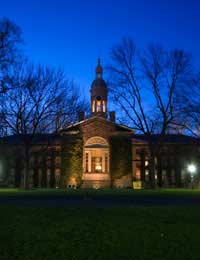The Goals of Princeton Engineering Anomalies Research (PEAR)

What is PEAR?
As of February, 2007, the correct question would be “what WAS PEAR?” as the facility has been shut down. From its opening in 1979 until then, however, PEAR was the Princeton Engineering Anomalies Research Lab, where researched searched for answers and understanding on the interaction of humans and machines. While this may not at first sound like much of a paranormal subject matter, consider that they were specifically examining how humans could influence the interaction of machines using only the mind and force of will.Founded by the Dean of the School of Engineering and Applied Science at the time, Robert G. Jahn, PEAR kicked off with parallel experimental programs, followed until its doors were closed. Human-machine interaction was one and remote perception was the other. Remote perception was another way of saying ESP or clairvoyance.
PEAR and Diversity
One of the strengths of PEAR was its staff’s diversity, made up of experts and students in many different disciplines. There were humanists mingling with engineers and psychologists comparing notes with physicists, all seeking some tangible evidence of the ability of humans to influence the world around them directly with the mind, by-passing the intermediary influence of the body.The comprehensive agenda of PEAR was based largely on statistical models, with an emphasis on testing the ability for humans to influence random events with the mind. A prime experimental standard was the REG or Random Event Generator; a machine that was set up to produce random events autonomously. These events were measured until a mean was established and then tested with a human participant.
The human tester would attempt to will a specific result and then the REG would be tested and the results measured to see if there was any appreciable difference from the mean.
As for the second path of PEAR, researches used the term “remote perception”, which they felt more accurately described the phenomenon more popularly called “remote viewing”, which used more senses than sight alone. A standard remote perception test would involve one PEAR researcher going to a specific site and describing it in a written report.


Re: Exploring Clairvoyance
Hello! I would like to summon an angel! Through crystal ball. What I need to learn? Clairvoyance courses or other trance way?
Re: Being Duped by a Fake Psychic
I would like to know how people can still get away from duping the public even although there Is a regulation against this.…
Re: All About Pyrokinesis
i want learn telekinesis and psychokinesis and pyrokinesis. And i don't know anyone methods on video or books about this subject. please…
Re: All About Online Psychics
This detailed article is providing some valuable and helpful tips with regards to obtaining a psychic reading from an online psychic.
Re: All About Pyrokinesis
Well this article is a very good read indeed. Questions but i have not place to start but i guess i will start here i found that is article…